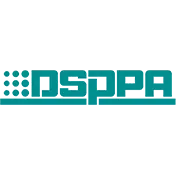
Hardware debugging
Connect the power supply of the projector and the input voltage should automatically adapt to 90V-240V AC voltage.
After turning on the power, the video conferencing system equipment projectors enter the waiting state. Press the standby button on the machine keyboard or remote control. The status indicator of the projector turns green, and the projector is turned on.
When turning off, press the standby button for 2 seconds. The projector will automatically shut down. After 10 minutes of projector cooling, turn off the projector power.
Signal source debugging of video conference system projection display system
Input connection: select input video, S-video, DVI, RGBHV, VGA, SDI, RS-232 and other signals on the panel of the projector; after selecting the signal in the menu, scan the signal format and load the matching file of the projector with the input signal source.
Computer (RGBHV, DVI, VGA) input: connect the graphics card of the computer to the computer input port of the projector (if it is a desktop computer, an additional signal interface is required), and adjust the computer input resolution and refresh rate, which is generally 1024×768 (60Hz).
Video (Video) input: Connect the video output of the signal source to the video input port of the projector (1x BNC or 1x RCA connector).
Communication debugging of the projection display system
Connection: Confirm the RS-232 cable wiring specification of the projector, test the RS-232 port communication, and connect the RS-232 cable.
Set the RS-232 communication parameters of the projector: Use the remote control to set the communication parameters of the projector and store multiple projector configurations and settings.
Connect the projector to the centralized control system, and test whether the projector communication is normal by issuing instructions through the front-end control.
Debugging of the camera system:
Connect the spherical camera, control keyboard, and monitor to the meeting room video conference system, and ground them. The monitor and control keyboard are placed in adjacent positions. Turn on the spherical camera, control keyboard, and monitor and keep the power on. Check the establishment of communication between the above devices and between the devices and the system to ensure that the camera can accurately capture the information on the scene. There is a normal image display on the monitor. Start the control keyboard to control the pan/tilt, aperture, and focus of the camera.
Camera preset position setting: Adjust the pan/tilt and lens through the control keyboard to make the monitor display the venue panorama clearly; align the camera with each representative and adjust it to display the personnel's faces clearly before storing each preset position.
Camera software settings: Connect the computer with the camera linkage related software installed to the central controller and camera switcher. Correspond each preset position with the camera lens of the relevant camera.
Function debugging:
Turn on each representative computer one by one, and the camera should accurately point to the corresponding position, and the monitor should display the image clearly.
Hardware connection
Connect signal processing equipment such as signal conversion wiring boxes, backup wiring boxes, and matrices according to the system connection method.
Check the power and signal interfaces of each device and maintain the devices in good operating condition.
Hardware debugging
Start the system terminal control signal source. Make it input to various display and playback devices through various signal converters.
Adjust according to the steps and functions set by the system program, and complete the switching and conversion of signals.
Signal quality debugging
Monitor the display and playback terminals, debug the parameters of each related device, and make the signal achieve the expected effect.
Test the performance of the signal, introduce noise, feedback and other related parameters to make the system more in line with the real situation, further adjust the signal, and make it conform to the required quality.
Our conference system supplier suggests that when multiple venues are used, the signal processing system must also realize real-time, lossless, long-distance bidirectional transmission of audio and video signals and computer signals between multiple meeting rooms. The video conference system signal processing system should have the following requirements: easy to operate and control, strong compatibility, and a resolution of no less than 1024×768; the system bandwidth should be 2 to 3 times the bandwidth required for high-quality video signals to ensure that the signal passes without attenuation.